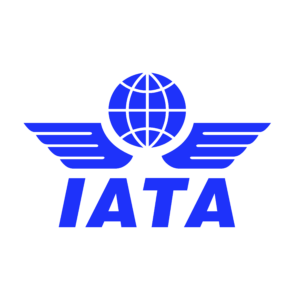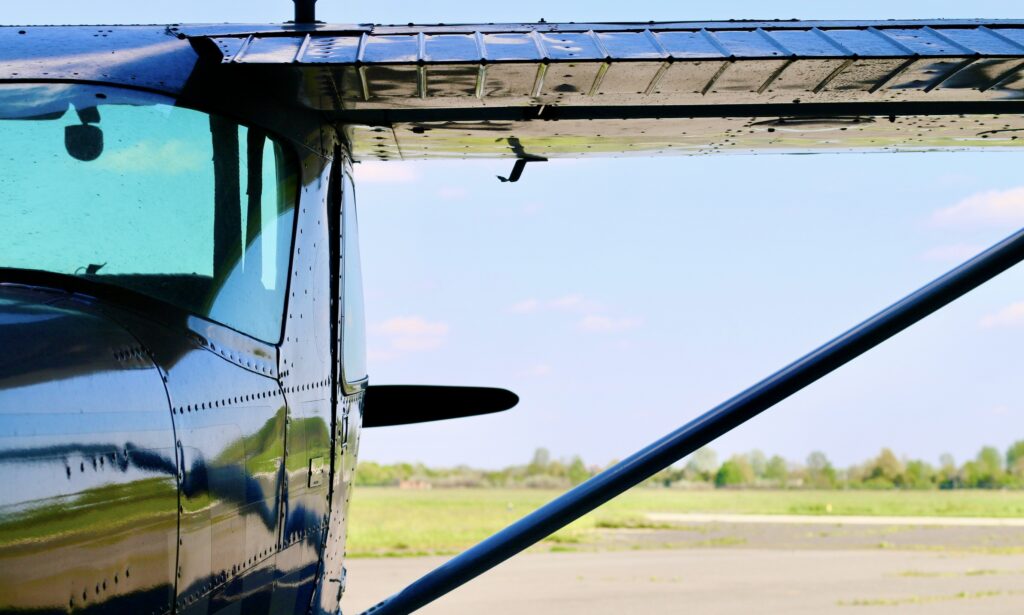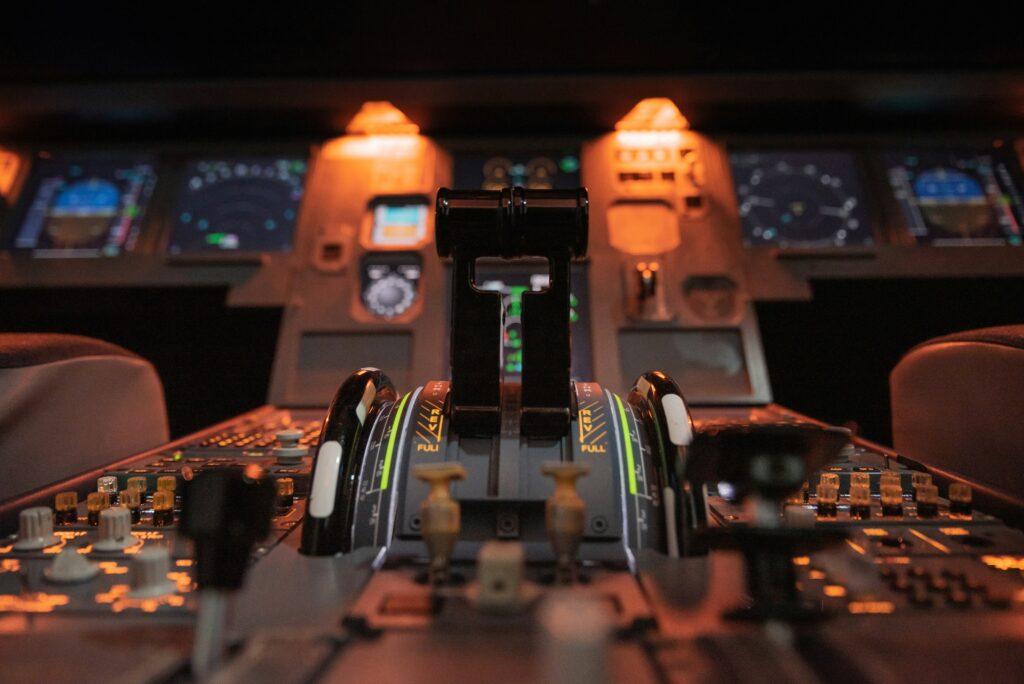Introduction
As technology continues to grow and improve, the aviation industry will have to keep pace. In today’s dynamic aviation environment, traditional training methods are becoming obsolete as they are time consuming and inefficient. There is a growing need for new, effective and adaptive training methods, particularly in aviation training.
That’s when Competency-Based Training & Assessment (CBTA) comes in. Opposite of Task-Based Training, CBTA in aviation is based on a simple fact: we need to adapt to the trainee’s competencies, not the other way around. CBTA take the trainee’s competencies and helps you make training sessions adapted to the ones he needs to work on most. This is a great to way to enhance safety and performance in the aviation industry.
In this article we will explore what Competency-Based Training & Assessment is and why it is so important in today’s aviation training environment. We will also focus on its core components, the strategy you need to think about before implementing it, and what the future holds for it.
Understanding CBTA: Definition and Origins
Competency-Based Training & Assessment (CBTA) is revolutionizing aviation training. Defined by ICAO, CBTA focuses on performance-driven training and assessment, ensuring that learning objectives align with real-world competencies. This approach applies across all aspects of pilot training, from aptitude testing and initial licensing to instructor/evaluator training and operator training.
Unlike traditional time-based and task-oriented methods, CBTA prioritizes measurable performance standards over rigid training hours, making it a more effective and adaptable approach.
Over the past 15 years, regulatory authorities worldwide have embraced CBTA principles, demonstrating its growing global influence:
- 2006: The Multi-Crew Pilot License (MPL) was adopted in Europe under the Joint Aviation Regulations (JARs).
- 2006: ICAO PANS Training Doc 9868 – 1st edition
- 2013: The publication of ICAO’s Doc 9995, Manual of Evidence-Based Training (EBT), established EBT as an alternative means of compliance for recurrent training and checking.
- 2014: Australia’s Civil Aviation Safety Authority (CASA) introduced competency-based training standards for all flight crew qualifications.
- 2016: ICAO PANS Training Doc 9868 – 2nd edition
- 2016: EASA incorporated EBT principles into its regulations.
- 2020: ICAO PANS Training Doc 9868 – 3rd edition
- 2020: The European Commission formally adopted baseline EBT requirements, and EASA launched a Rulemaking Task to integrate CBTA principles into Aircrew regulations.
CBTA is transforming aviation training by fostering a skilled and competent workforce, ultimately enhancing aviation safety and operational efficiency. Supported by robust course design, qualified instructors, and data-driven training methods, CBTA optimizes learning effectiveness. Its performance-based, outcome-driven approach ensures that pilots and aviation personnel meet modern safety standards more effectively than traditional training models.
As CBTA becomes the industry norm, it is increasingly recognized as the most effective approach to training, surpassing outdated task- and hours-based methods in both relevance and efficiency.
👉 Find out more about IATA regulations!

Core Components of CBTA
Competency-Based Training and Assessment (CBTA) is a structured approach designed to ensure aviation professionals develop and maintain the skills required for operational excellence. This method focuses on real-world competencies, emphasizing measurable learning outcomes, performance-based assessments, and continuous improvement.
Instructional Systems Design (ISD)
Instructional Systems Design (ISD) is a systematic approach to training that ensures instruction is effective, efficient, and aligned with operational requirements. It involves a structured process with five phases—Analysis, Design, Development, Implementation, and Evaluation (ADDIE)—to identify training needs, design and develop training solutions, deliver them, and continuously evaluate their effectiveness.
Competency Framework
CBTA defines competencies across multiple dimensions, including technical skills, decision-making, problem-solving, communication, and human factors. These elements form the foundation for effective training, ensuring that aviation personnel meet safety and operational standards. The competency framework is designed to reflect industry requirements and regulatory guidelines, ensuring relevance and applicability.
Learning Outcomes
Clear, measurable learning outcomes are critical in CBTA. They serve as benchmarks for trainee progress, defining what learners should achieve at each stage. By establishing precise objectives, CBTA enhances training efficiency, ensuring that knowledge and skills translate into real-world operational effectiveness. These outcomes also guide instructors in tailoring training sessions to address specific competency gaps.
Assessment Strategies
CBTA relies on performance-based assessments, scenario-based evaluations, and continuous feedback loops to measure competency. Simulation training plays a crucial role in replicating real-world challenges, allowing trainees to demonstrate their abilities in a controlled environment. These assessments go beyond traditional testing, focusing on application and adaptability rather than rote memorization. Continuous feedback ensures that learners refine their skills over time, reinforcing strengths and addressing weaknesses.
Continuous Improvement
CBTA is an iterative process where training programs evolve based on feedback and performance data. This continuous improvement cycle allows organizations to refine competency standards in response to technological advancements, regulatory updates, and industry trends. By maintaining a dynamic training approach, CBTA ensures that aviation professionals remain proficient and adaptable in an ever-changing landscape.
Implementing CBTA effectively enhances aviation safety, operational efficiency, and workforce preparedness, making it a key strategy for modern training programs.

Implementation of CBTA in Aviation Training
Implementing Competency-Based Training and Assessment (CBTA) in aviation training can seem daunting. However, with the right approach and guidance, training organizations can begin the transition today, ensuring a more effective and tailored learning experience for trainees.
Steps to Integrate CBTA
The first step in implementing CBTA is to develop a structured process for integrating it into existing training programs. This involves identifying key competencies, redefining learning objectives, and ensuring that assessments align with competency-based performance indicators. Updating training materials and curricula to reflect real-world operational demands is crucial for a smooth transition.
Role of Instructors and Evaluators
A successful CBTA implementation requires a shift in instructor and evaluator roles. Instructors must be trained to adopt a more facilitative approach, focusing on coaching and guiding trainees rather than simply delivering content. Evaluators need to assess competencies through performance-based criteria, ensuring that each trainee demonstrates proficiency in the required skills. A key aspect of this shift is moving from traditional pass/fail assessments to a more nuanced evaluation of competency levels.
Practical Application
Aviation academies and airlines are already adopting CBTA through scenario-based simulator sessions, competency checklists, and personalized feedback mechanisms. These approaches allow trainees to engage in realistic flight operations, fostering decision-making, problem-solving, and teamwork in controlled environments. The ability to tailor training to individual needs enhances learning effectiveness and improves overall operational safety.
Regulatory Alignment
CBTA must align with regulatory frameworks, such as ICAO and EASA guidelines, to ensure compliance and industry acceptance. Regulatory bodies encourage CBTA adoption as it enhances pilot competency, reduces training deficiencies, and improves safety outcomes. Training organizations should work closely with regulators to integrate CBTA practices effectively.
Technology Integration
Digital tools, simulation technologies, and data analytics play a vital role in CBTA implementation. Advanced Learning Management Systems (LMS), AI-driven analytics, and immersive simulation technologies help track trainee progress, provide personalized learning paths, and refine training methodologies based on real-time performance data.
By following these structured steps, aviation training providers can successfully transition to CBTA, ensuring a more adaptive, effective, and safety-driven training environment.
👉 Read our business case on “CBTA-Compliant Training Management Software”

Benefits of CBTA for Aviation Safety and Efficiency
Competency-Based Training and Assessment (CBTA) is revolutionizing aviation training by focusing on real-world skills and decision-making. Unlike traditional training methods that prioritize hours-based progression, CBTA ensures that trainees achieve proficiency in core competencies before advancing. This shift enhances safety, boosts performance, and aligns training with both individual needs and regulatory expectations.
Enhanced Safety
CBTA significantly improves aviation safety by targeting critical skill development and decision-making abilities. By leveraging data-driven insights, training programs can identify and address competency gaps, ensuring that pilots, cabin crew, and ground staff are well-equipped to handle real-world challenges. This proactive approach minimizes human error, leading to a safer operational environment.
Improved Performance
Focusing on targeted skill enhancement leads to better performance outcomes. By tailoring training sessions to address specific weaknesses, CBTA helps reduce pilot errors, improve situational awareness, and foster more effective teamwork. The result is faster skill acquisition and a higher standard of operational readiness.
Tailored Training
One of CBTA’s most significant advantages is its ability to adapt training to individual needs. Rather than applying a one-size-fits-all approach, CBTA customizes learning paths based on each trainee’s strengths and areas for improvement. This personalized method increases engagement and efficiency, making training more effective for pilots and aviation personnel at all levels.
Regulatory Compliance
CBTA aligns with evolving aviation regulations, ensuring that training programs meet or exceed competency and safety requirements set by authorities such as ICAO, EASA, and the FAA. By embedding regulatory compliance into its framework, CBTA helps operators stay ahead of industry standards while fostering a culture of continuous improvement.
Long-Term Impact
Beyond immediate training outcomes, CBTA has a lasting impact on aviation safety and efficiency. By continuously refining competency levels, it enhances incident prevention, reduces operational risks, and improves overall airline performance. The long-term benefits extend to cost savings, optimized resource allocation, and a workforce that is more resilient to evolving aviation challenges.
With its data-driven, adaptive, and performance-oriented approach, CBTA is shaping the future of aviation training, ensuring a safer and more efficient industry.
Challenges and Considerations in Adopting CBTA
Implementing Competency-Based Training & Assessment (CBTA) comes with several challenges that organizations must carefully navigate. From overcoming implementation barriers to addressing standardization issues, cultural adaptations, and regulatory compliance, successful adoption requires a well-structured approach.
Implementation Barriers
Transitioning to CBTA may face resistance, particularly from traditional training institutions accustomed to conventional methods. To ease this shift, organizations must highlight CBTA’s tangible benefits, such as enhanced training efficiency and improved pilot competency. Key challenges include resource allocation, retraining instructors to align with competency-based methodologies, and ensuring robust assessment tools are in place. A strategic approach, including clear communication and data-driven demonstrations, can help mitigate these concerns.
Standardization Issues
Standardizing CBTA across the aviation industry is complex due to varying regulations, operational practices, and competency assessment criteria among different organizations and countries. Global regulatory bodies like IATA, ICAO, and EASA face the challenge of harmonizing these approaches to ensure consistency in training quality while accommodating regional variations.
Cultural and Regulatory Challenges
Beyond technical and logistical challenges, adopting CBTA often requires a cultural shift within organizations. Resistance may stem from ingrained training practices, necessitating regulatory updates and internal alignment to fully integrate CBTA principles.
Mitigation Strategies
To overcome these challenges, organizations can implement CBTA in phases, engage stakeholders early in the process, and provide continuous training for instructors. Collaboration between regulators, training providers, and airlines is crucial to ensuring a smooth transition and maximizing the effectiveness of competency-based training.
👉 Learn more about CBTA challenges!

Future of Aviation Training with CBTA
The future of aviation training is set to be revolutionized by Competency-Based Training and Assessment (CBTA), powered by emerging technologies like AI, Virtual Reality (VR), and sophisticated flight simulators. AI-driven analytics and VR scenarios will enable personalized, adaptive training, creating highly realistic learning environments where trainees can practice critical decision-making skills safely and efficiently.
As aviation evolves—with new aircraft technologies and complex operational scenarios—the competencies required for pilots, cabin crew, and maintenance staff will become more nuanced, driving continual updates to CBTA standards.
Globally, CBTA is rapidly gaining acceptance, promising unified standards and improved safety outcomes worldwide. International regulatory bodies are increasingly harmonizing their requirements around CBTA, easing cross-border recognition and cooperation.
Nevertheless, the potential of CBTA remains vast and largely untapped, offering numerous opportunities for research. Continuous evaluation and innovation are vital to refine CBTA methodologies, ensuring aviation professionals remain equipped for tomorrow’s dynamic and complex industry challenges.
👉 Discover our innovation to serve training and operations! 🔬
Conclusion
Competency-Based Training and Assessment (CBTA) represents a transformative shift in aviation training, focusing on specific competencies rather than traditional task-based methods. By emphasizing clearly defined skills, targeted training modules, robust assessment strategies, and continuous feedback, CBTA enhances learning effectiveness and adaptability. While implementation presents challenges, its adoption significantly improves aviation safety, operational efficiency, and trainee readiness. As aviation continues evolving, embracing CBTA becomes increasingly essential. Industry professionals and enthusiasts alike are encouraged to further explore and adopt competency-based approaches, ensuring aviation training remains aligned with modern demands and continues progressing toward safer skies and higher performance standards.



